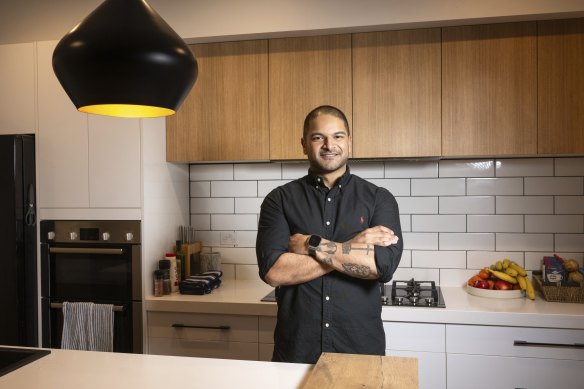Melbourne suburbs where house prices rose most – and where they fell
A string of middle-ring suburbs recorded Melbourne’s highest house price growth over the past year as stretched buyers turn to relatively affordable locations.
By contrast, many of the suburbs where prices fell were more affluent, inner neighbourhoods where a typical home costs about $2 million, the latest Domain House Price Report for the June quarter, released on Thursday, shows.
Higher interest rates have put home buyers under pressure, prompting some to rethink their property search and look further afield.
The financial year’s biggest rise was in Keilor, up 20 per cent to a median of $1.2 million.
This was followed by two suburbs at similar price points – Wantirna South (up 14.8 per cent to $1,281,000) and Oakleigh South (up 13.7 per cent to $1.16 million).
Domain chief of research and economics Dr Nicola Powell said the stable market meant home buyers were more likely to perceive value and take their chance to get in.
“It’s home owners, it’s locals to Melbourne that recognise those opportunities: ‘Now is our time to make that purchase before prices rise further,’” she said.
“The affordable locations, the family locations … They’re trying to find value, they’re trying to buy now while conditions are pretty stable for all of Melbourne.”
Meanwhile, several suburbs with median house prices close to $2 million made the list of biggest drops, including South Yarra (down 14.7 per cent), Armadale (down 14.6 per cent), Elwood (down 14.3 per cent), Hawthorn East (down 12.4 per cent) and Elsternwick (down 12.3 per cent).
“Those high end homes can also stop transacting during a period of decline, which can affect price growth,” Powell said. “They only sell for the right price … and that can also impact the overall median.”
Buyer’s advocate Antoinette Sagaria noted the gains in middle-ring areas, saying family homes were often a recession-proof investment.
“When a family needs to move, or has certain requirements, sometimes the state of the market can only dictate so much,” the Entourage Property and Finance director said.
“Conversely when you’re looking at some of the more premium areas where there is higher priced property … there’s less of a need to move, or there’s potentially different motivations for moving,” she said.
She said well-maintained or renovated properties were performing well, especially if they had a generous size and a classic floor plan, and areas such as Mont Albert North – with the fourth-fastest price growth – have family homes like this in abundance.
The broad-based gains – prices are higher than a year ago in most suburbs – have left home buyers feeling the pinch.
First home buyer Sean Singh, 32, bought a one-bedroom apartment in Kew after failing to find any suitable properties he could afford in his preferred location.
“I was looking very much at the Collingwood, Richmond area, to stay relatively central to where I was … there were cladding issues, really high body corporate fees, much smaller apartments, so it wasn’t really what I was looking for,” Singh said.
The tech partnerships manager said he was able to get more value for money by looking at neighbouring suburbs slightly further from the city.

Sean Singh, pictured in the Collingwood property he rents, has just bought a home in Kew.Credit: Penny Stephens
“I was able to find something that was significantly larger, with a terrace that’s almost the size of the whole apartment, and it has a full-size kitchen and all the things that I really wanted.”
Singh, who has been renting in Collingwood, said he wanted to take the opportunity to break into the property market while units remained somewhat affordable.
“The driving factor for me was very much about, how do I get in while things are still somewhat affordable and while I can afford it right now, knowing I could afford it right now, and not knowing what the future of the property market might look like,” he said.
Impact Economics and Policy lead economist Dr Angela Jackson said the property market had defied expectations, rising in price despite higher interest rates.
She said the broad gains across a range of suburbs meant younger Australians hoping to buy a home would need significant help from their parents.
She attributed the gains to supply and demand, as not enough new homes have been built for a growing population and empty nesters have been tending to stay in current homes rather than downsize and turn over the housing stock. She also noted the demand for property as a tax advantageous form of investment and called for reform to stamp duty and capital gains tax.
“That issue is just getting worse over time. So really now for middle income earners or even higher income earners to enter the property market without help from the bank of mum and dad is becoming increasingly out of reach,” she said.